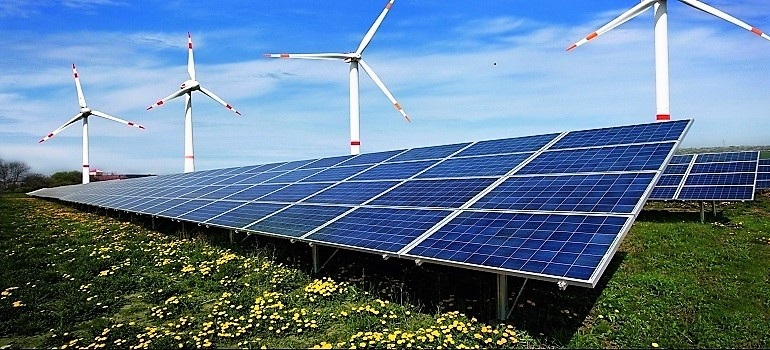As the second most populated country on the planet (and seventh largest in area), India has enormous energy demands.

Today, most of that energy comes from coal and, as a result, India trails only China and the United States when it comes to CO2 emissions.
India has already committed to the ambitious goal of transitioning to 60 percent renewable energy in its electricity sector by 2030, but recent research from the Harvard John A. Paulson School of Engineering and Applied Sciences found that the country could go even further with renewables and reduce overall energy costs.
In a paper published in Nature Communications, researchers found that wind and solar energy could meet 80 percent of anticipated electricity sector demand in India in 2040.
The researchers found that achieving that level of reliance on renewable energy would reduce CO2 emissions by as much as 85 percent and the overall costs for power by as much as $50 billion.
“We came to the striking conclusion that investments in renewables today could play an important role in reducing the overall energy costs in India in the future,” said Michael McElroy, the Gilbert Butler Professor of Environmental Studies and senior author of the study.
“This has clear policy implications for India’s electricity sector in planning for a low-carbon future.”
McElroy and the team, which included researchers from Huazhong University of Science and Technology in Wuhan and Tsinghua University in Beijing, developed a new model that integrated all the various components of India’s electricity system to find the cheapest way to incorporate specific levels of renewables into the overall power grid.
The researchers scaled current levels of energy consumption to estimate electricity demand in 2040.
Their model considered the hourly demand over the course of the year for five regions — north, west, south, east, and northeast — and broke down the most cost-effective power strategy for each.
For example, southern and western India could generate 80 percent of their total electricity demand with wind power.
Wind energy has the added benefit of requiring less land than solar panels, which is important for these largely agricultural regions. India’s east, north and northeast regions could be powered mostly by solar energy.
Nationwide, the team found that the most cost-effective strategy to reach 80 percent renewable energy by 2040 would require 58 percent wind and 23 percent solar with coal, hydro, nuclear, and gas filling in the gaps.
The researchers estimated that this strategy wouldn’t be significantly more expensive to implement than the Indian government’s current 60 percent renewable goal and would result in operating cost $50 billion cheaper than the coal-dominated approach.
“We found that renewables can play a major role in decarbonizing India’s electricity sector, while providing a source of electricity cheaper or at least competitive with what could be supplied using fossil fuel-based alternatives,” said Peter Sherman, a graduate student in McElroy’s lab and co-author of the paper.
Next, the team will study ways to reduce carbon emissions from other parts of the Indian economy, including industry and transportation.
“We are particularly interested in the possibility of increasing the future role for green hydrogen, hydrogen produced by electrolysis using carbon-free electricity,” said McElroy.
The paper was co-authored by Tianguang Lu, Xinyu Chen, Shi Chen and Xi Lu. It was supported in part by the Harvard Global Institute.

